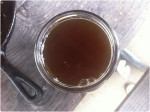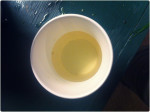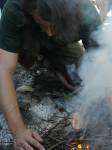Number One Survival Food: Cattails
The first food I would look for in a survival situation would be cattails. Besides being delicious, they are the quickest way to “fill you up” with sustained energy, because their rhizomes (root structures) and shoots are full of easily-digestible starch. I remember learning somewhere that besides its fiber and water content, cattail rhizomes are 80% carbohydrate, about 7% protein and 13% vitamins and minerals. The nutritional value of cattail shoots are also impressive. Of course, any parts of the plant that you took from below the water line are no help if you can’t start a fire, because eating those parts raw would put you at risk of water-born diseases like giardia.
Background on Cattails
The Typha genus, which is in its own family and order, has its closest relative as the sedge order which also includes grasses. Specific species include the narrow-leafed cattail Typha angustifolia, the wide-leafed cattail Typha latofolia, the common cattail Typha domingensis the hybrid or White Cattail, crossbred between Typha angustifolia and Typha latofolia T x glauca with “the two most popular species are the Typha angustifolia (narrow-leafed cattail) and the Typha latifolia, (broad-leaved cattail) which are found across North America. The T. angustifolia does not go as far north as the T. latifolia and the T. domingensis grows more in the southern parts of America, as well as into South America.”
Eating Cattails
Once you have a fire going, cattails are great because they are easy to pull out of the mud, easy to clean, and easy to cook. Just throw them onto the coals to heat through thoroughly, and enjoy! Personally, I enjoy the rhizomes best, using my teeth to scrape the clearly visible starch-balls off of the stringy stem. But if you have access to some cooking oil or butter, try frying the shoots in a pan for a wonderful, nutty taste.
When the flower spikes first emerge above the new leaves in late spring, the unripe, green female “cob” part is an incredible treat. I like them raw, but to be safe, you can cook until tender, plus season with salt and butter for a mouth-watering experience. Toward early summer, if you gather the pollen from the top of the now-mature “cattail” seed head, it is a wonderful addition to pancakes or other breads, or a great topping for stir-fry.
Be Careful with Cattails
Unfortunately, if you eat cattails for very long, they must be harvested from a completely unpolluted location. The reason is that it bio-accumulates toxins, which is why you will see it planted in bio-swales, or ponds which are designed to accumulate run-off from developments. In my view, this actually raises this plant’s status, because it is so important for the cleansing of wetlands and the water that will flow into our rivers.
I will also mention some medicinal qualities of the cattail. Like any plant, there are precautions to its use. For instance, pregnant women are sometimes advised against using cattails medicinally. According to http://earthnotes.tripod.com/cattail.htm, cattails are considered to have herbal properties including “tonic, diuretic, circulatory, nutritive, stimulant, refrigerant (root), diuretic (leaf), astringent (pollen), and hemostatic (down).”
Cattails as Medicine
According to wikipedia, Chinese and western herbalists note its affects on the liver, heart and spleen. Its pollen is sometimes used as a coagulant and sometimes as an anticoagulant, internally and externally, depending on how it is prepared, such as by roasting it. Some have even used its rhizome to treat dysentery. Some North American tribes seem to have pound the rhizomes down to apply to burns and sores.
My favorite medicinal use of the cattail is that “gel” which you can find between the base of the leaves. It has an an anesthetic effect when applied locally, for instance on the gums below a sore tooth. Some say that the gel is also antiseptic, but I’m not so sure about that.
The Utilitarian Cattail: Crafts & More
Before mentioning my favorite utilitarian qualities of the cattail, I’ll quote http://www.backwoodshome.com/articles/duffyk43.html which aptly states that “the utility of this cattail is limited only by your imagination. The dried stalks can be used for hand drills and arrow shafts. The seed heads and dried leaves can be used as tinder. The seed head fluff can be used for pillow and bedding stuffing or as a down-like insulation in clothing. The leaves can be used for construction of shelters,… baskets, hats, mats, and beds.”
In fact, my favorite uses of cattails include weaving them into window shades, and at Wolf Camp, we like to dip the mature seed-heads into oil, and then lighting them in the fire for use as torches. Cattails are also amazing sitting mats: they are like behind-warmers because the air gets trapped in the cattail leaves, and that’s the definition of insulation!
For More Info
Learn how to confidently identify plants using their unique family patterns in this in-depth video by author of Botany in a Day, Thomas Elpel.
*** For educational purposes only. This information has not been evaluated by the Food and Drug Administration. This information is not intended to diagnose, treat, cure or prevent any disease. We recommend that you consult with a qualified health care practitioner before using herbal products, particularly if you are pregnant, nursing or on any medications. ***
*** Please read our Honorable Harvesting Guidelines before harvesting any plant material. The final guideline is of utmost importance: “Never put anything in your mouth unless you are 100% sure it is safe to ingest.” ***
Chris Chisholm is founder and co-owner of Wolf Camp & School of Natural Science. Check out his other blog posts including the Top 10 Wild Edible Food Plants. or in-depth learning, join our Weekly Online Classes:
- Tuesday Classes focus on Herbal Medicine & Plant Crafts in the autumn season, followed by Gardening & Cooking Wild Edible Food Plants in the spring.
- Thursday Classes focus on Wilderness Survival & Bushcraft Skills in the Autumn Season, followed by Wildlife Tracking & Birding in the spring.
- Saturday Classes for all ages guide you through the Wolf Journey Earth Conservation Course – Book One: The Neighborhood Naturalist.














Hello! Does the look alike water Iris have the gel like the cattails and how do you store the cattail gel?
Sorry we missed your comment! Great questions. Not that we know of on the first question, and we don’t know the answer to the second question. Please let us know if you can determine that thanks!